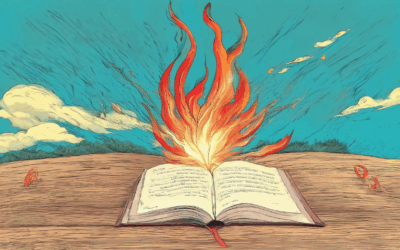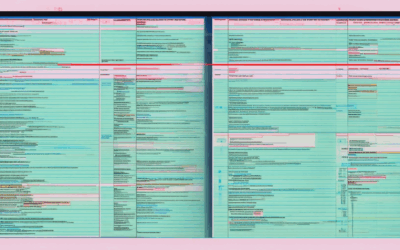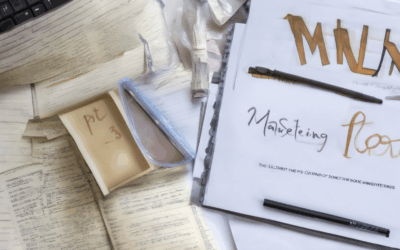Exploring Literary Writing Techniques: A Comprehensive Guide to Elements and Devices
Writing is an art form that requires mastery of various tools and strategies to convey stories, emotions, and ideas effectively. Literary writing techniques serve as the cornerstone for any writer, enabling them to craft compelling narratives, develop complex characters, and explore intricate themes. From the basics of creative writing to advanced methods like using literary devices, this guide delves into the essential elements that make writing engaging and meaningful. Whether you’re a seasoned writer or just beginning, understanding these techniques will help you unlock your creative potential and elevate your work to new heights.
Key Takeaways
- Leverage Literary Elements: Master plot, characterization, symbolism, and other devices to elevate your writing and engagement.
- Explore Diverse Genres: Understand fiction, non-fiction, poetry, and more to tailor your creativity to the right audience.
- Construct Engaging Narratives: Use protagonist, antagonist, setting, and story elements to build memorable characters and compelling plots.
- Apply Thematic Depth: Infuse themes like love, loss, or identity to add layers and depth to your storytelling.
- Utilize Stylistic Choices: Develop a unique voice through diction, tone, and structural decisions to differentiate your style.
- Incorporate Symbolic Imagery: Employ symbols to represent deeper meanings and enhance your narrative’s emotional resonance.
- Engage Readers Through Perspective: Select first-person, third-person, or another viewpoint to connect authentically with your audience.
- Drive Conflict Resolution: Create meaningful internal or external conflicts to propel your story forward and maintain reader interest.
- Deliver Clear Messages: Ensure your theme and allusions consistently convey your intended meaning.
- Balance Structure and Creativity: Craft a well-structured plot while allowing space for innovation and personal expression.

What are Literary Techniques and Examples?
Literary techniques are various methods authors use to create meaningful and engaging stories, convey themes, and enhance the reading experience. Below are some common literary techniques along with examples:
Figurative Language
Figurative language uses metaphors, similes, and symbols to give objects or concepts a more vivid or understandable meaning.
- Metaphor: A direct comparison between two unlike things. Example: “Time is a thief.” (From James Whitfield Thomson)
- Simile: A comparison between two unlike things, often involving a specific detail. Example: “His smile was as bright as the sun.” (From James Whitfield Thomson)
- Symbolism: The use of an object or action to represent something else, often an abstract concept. Example: A dove symbolizing peace.
Narrative Techniques
These techniques help in constructing and delivering the story effectively.
- Characterization: The process of developing characters. Example: In “To Kill a Mockingbird,” Atticus Finch is portrayed as a moral hero.
- Persuasion Techniques: Methods to convince readers of a character’s actions or beliefs. Example: Socratic questioning in Plato’s dialogues.
- Point of View: Who is telling the story? Example: First-person narratives like “I am Nostradamus” by James Whitfield Thomson.
Structural Elements
These techniques relate to the overall structure of the text.
- Plot Structure: The sequence of events in a story. Example: The three-act structure (exposition, conflict, resolution).
- Themes: The central idea or message of the work. Example: The theme of love in “Romeo and Juliet.”
- Setting: The time and place of the story. Example: A historical novel set during the Renaissance.
Emotional Devices
These techniques evoke emotions and reactions from the reader.
- Eupathy: Evoking pity or sympathy. Example: Descriptions of a character’s suffering.
- Anger: Stirring feelings of anger or frustration. Example: A character being wronged in a story.
- Fear: Creating a sense of dread or anxiety. Example: Descriptions of a stormy night.
Language and Style
The way words are chosen and arranged can greatly impact the reader’s experience.
- Alliteration: Repetition of initial consonant sounds. Example: “Peter Piper picked a peck of pickled peppers.”
- Onomatopoeia: Words that imitate sounds. Example: “Bam! Boom! Pow!”
- Imagery: Vivid descriptions that paint pictures in the mind. Example: “The garden was alive with the sound of chirping birds.”
By understanding and effectively using these literary techniques, writers can craft stories that resonate deeply with readers, convey complex ideas, and create memorable experiences.
Understanding 13 Key Literary Terms
Allegory
A figure of speech where two unlike things are compared. Example: “The lion roared like a thunderous storm.”
Analogy
A comparison based on similarity. Example: “Her smile was as bright as the sun.”
Antagonist
The character who opposes the protagonist. Example: In “Romeo and Juliet,” Tybalt is the antagonist.
Atmosphere
The overall mood or feeling of a story. Example: The eerie atmosphere in “The Tell-Tale Heart.”
Ballad Stanza
A fixed number of lines in a ballad, usually eight. Example: Quatrainnain (four-line stanzas).
Character
A person or entity in a story. Example: Hamlet is a complex character in Shakespeare’s play.
Climax
The highest point of tension or conflict in a story. Example: The battle scene in “Moby Dick.”
Conflict
A struggle or opposition within a story. Example: The internal conflict of Huck Finn in “Huckleberry Finn’s Adventures.”
Couplet
Two consecutive lines in a poem that rhyme. Example: “Love is blind, and so is friendship sometimes.”
Dialogue
Conversation between characters. Example: “Why did you do that?” she asked, her voice trembling.
Diction
The choice of words in a text. Example: The diction in “To Kill a Mockingbird” is simple yet powerful.
Drama
A genre focused on serious themes and emotional appeal. Example: “Death of a Salesman” by Arthur Miller.
Imagery
Vivid descriptions that create pictures in the mind. Example: “The garden was alive with dancing butterflies.”
Metaphor
A direct comparison that implies a similarity. Example: “Time is a thief that steals moments away.”
Motif
A recurring element or symbol. Example: The lighthouse in “The Great Gatsby” represents hope and isolation.
Omniscient Point of View
A narrative perspective where the author knows everything about all characters. Example: “All of London is laughing” in “1984.”
Parody
A humorous or satirical imitation of something. Example: “The Simpsons” parodies life in America.
Plot
The sequence of events in a story. Example: The plot of “Pride and Prejudice” centers around Miss Jane Austen’s courtship.
Rhyme Scheme
The pattern of rhyming in a poem. Example: ABAB in “Shakespeare’s Sonnets.”
Satire
Irony or exaggeration to criticize something. Example: Jonathan Swift’s “Gulliver’s Travels” uses satire to critique human nature.
Setting
The time and place of a story. Example: The setting of “The Catcher in the Rye” is New York City during the 1940s.
Simile
A comparison between unlike things. Example: “His smile was as warm as the sun on a clear day.”
Sonnet
A 14-line poem with a specific rhyme scheme. Example: Shakespeare’s famous sonnets follow the Shakespearean rhyme scheme.
Symbolism
A symbol representing something beyond its literal meaning. Example: The white dove symbolizes peace in many stories.
Theme
The central idea or message of a work. Example: The theme of “To Kill a Mockingbird” is the loss of innocence.

What Are the 5 Literary Devices?
Here are five fundamental literary devices commonly used in writing:
- Metaphor
- Definition: A metaphor is a direct comparison between two unlike things, often implying a similarity or connection.
- Example: “Time is a thief” (from Shakespeare’s play Macbeth ), where time is compared to a thief to emphasize its stealthy nature.
-
Symptomlism
- Definition: Symbolism represents abstract concepts or ideas through concrete objects or actions.
- Example: In F. Scott Fitzgerald’s The Great Gatsby , the green light symbolizes the American Dream.
-
Foreshadowing
- Definition: Foreshadowing hints at future events or outcomes, often subtly, to prepare the reader.
- Example: In Harry Potter and the Sorcerer’s Stone , Dumbledore’s comment about “something terrible happening” foreshadows the rise of Voldemort.
-
Alliteration
- Definition: Alliteration is the repetition of initial consonant sounds in closely connected words.
- Example: “Peter Piper picked a peck of pickled peppers” uses alliteration to create a playful rhythm.
-
Irony
- Definition: Irony is a statement that contradicts its intended meaning, often causing humor or surprise.
- Example: “What a beautiful day for a funeral!” expresses ironic contrast between the beauty of the day and the somber event.
These devices enhance writing by adding depth, emotion, and engagement to literature.

The 10 Elements of Literature
Here is a detailed breakdown of the 10 essential elements of literature, each explained with examples:
- Plot : The sequence of events in a story, often divided into acts, which leads to the resolution of the conflict. Example: In “To Kill a Mockingbird,” the plot follows Scout Finch’s growth and the trial of Tom Robinson.
- Point of View : The perspective from which the story is told, such as first-person (“I”), second-person (“you”), or third-person (limited or omniscient). Example: “1984” is narrated in the first person by Winston Smith.
- Setting : The time and place where the story occurs. It can be real or imaginary. Example: “The Great Gatsby” is set in the Jazz Age-era New York.
- Conflict : The central problem or struggle in the story. It can be internal (character) or external (environment). Example: In “Hamlet,” the conflict is Claudius’s guilt and Hamlet’s revenge.
- Characterization : How characters are developed through actions, dialogue, and descriptions. Static (traits) vs. dynamic (development). Example: Atticus Finch in “To Kill a Mockingbird” is both static and dynamic.
- Symbolism : Objects or images representing deeper meanings. Example: The lighthouse in “The Great Gatsby” symbolizes isolation and ambition.
- Theme : The underlying idea or message of the story. Example: “The Catcher in the Rye” explores alienation and identity.
- Allusion : References to famous people, places, or events. Example: “Moby-Dick” alludes to Captain Ahab’s obsession with the white whale.
- Style : The writer’s manner of writing, including diction, tone, and structure. Example: Ernest Hemingway’s sparse, impactful style in “A Farewell to Arms.”
- Irony : The contrast between what is expected and what actually happens. Example: Oedipus Rex ends tragically despite his efforts to avoid fate.
These elements work together to create a compelling narrative, engage readers, and convey the author’s vision.
What Are the 14 Main Literary Genres?
- Fiction
- Mystery
- Romance
- Fantasy
- Science Fiction
- Thriller/Suspense
- Historical Fiction
- Literary Fiction
- Non-Fiction
- Biography/Autobiography
- Memoir
- Essay
- Journalism
- Philosophy/Theology
- Poetry
- Drama
- Hybrid Genres
- Graphic Novels
- Epistolary Novel
- Choral Work
- Speculative Fiction
- Young Adult
- Children’s Literature

What Are the 12 Elements of a Story?
A story is a powerful medium that captivates audiences by weaving together various elements that create a compelling narrative. Below are the 12 essential elements of a story, each playing a vital role in crafting an engaging and memorable tale.
- Protagonist : The primary character around whom the story revolves. This individual undergoes a journey of growth, facing challenges and ultimately learning important life lessons. Their motivations and actions drive the plot forward.
- Antagonist : The force or entity that opposes the protagonist. This could be an external threat, such as a rival or natural disaster, or an internal struggle, such as fear or doubt. The antagonist creates conflict and propels the story toward resolution.
- Setting : The time and location where the story unfolds. The setting can be real or imagined, and it often plays a significant role in shaping the tone and atmosphere of the narrative.
- Point of View (Perspective) : The lens through which the story is told. This could be limited to a character’s experiences or offer a broader view of the world. The choice of perspective affects how events unfold and how characters are portrayed.
- Objective : The main goal the protagonist seeks to achieve. This objective gives the story direction and purpose, driving the protagonist’s actions and decisions.
- Stakes : The consequences of the protagonist’s actions or the outcome of the story’s events. High stakes create urgency and increase the emotional investment of the audience.
- Plot Structure : The sequence of events that make up the story. A well-structured plot typically includes a beginning, middle, and end, with rising and falling action that builds toward a climax.
- ** Rising Action**: The series of events that occur before the climax, gradually building tension and suspense. These events set the stage for the final confrontation.
- ** Climax**: The turning point of the story where the greatest conflict occurs. This is often the most intense moment of the narrative, determining the outcome of the protagonist’s journey.
- ** Falling Action**: The events that follow the climax, resolving the main plotlines and bringing the story to its conclusion. This phase wraps up loose ends and provides closure.
- ** Symbolism**: Objects, actions, or concepts that carry deeper meaning and represent larger themes or ideas. Symbols enhance the narrative by evoking emotions and reinforcing the story’s message.
- ** Language**: The words and phrases used to convey the story’s themes, characters, and settings. Effective language creates vivid imagery and immerses the reader in the narrative world.
By masterfully combining these elements, authors can craft stories that resonate emotionally with readers, leaving a lasting impact. Each component contributes uniquely to the overall tapestry of the narrative, ensuring that the story remains engaging and thought-provoking.
Understanding and effectively utilizing these 12 elements of a story is essential for anyone looking to create compelling and impactful narratives. Whether you’re writing fiction, poetry, or any form of storytelling, these elements provide a solid foundation for constructing a story that captivates and inspires.





0 Comments